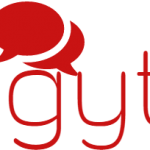Nonprofit organizations rely on their board of directors to provide the mission, vision and values that guide the organization. In addition, boards assist with key functions such as fund raising, policy development and evaluation of the executive director. In short, the staff require strong leadership from their board in order to ensure a successful organization. That leadership is secured through a strong board development process.
Board development consists of the following:
Step 1: Board Member Recruitment
The best board development begins with the recruitment of the most suitable directors. Before launching a recruitment effort, it is crucial to determine the needs of the organization. A gap analysis should be conducted to identify the skills and assets of the current board members relative to the needs of the organization now and into the future. For example, if marketing and communication skills were lacking and presumed to be of importance to the future success of the organization, then recruiting an individual with these talents would be desirable.
During the actual recruitment process it is important to convey the mission, vision and values of the organization to the prospective members. In addition, the nominating committee should provide a brief overview of the organization such as its history, services and financial status. The prospective member should also be shown the job description of the board members. At this juncture, information concerning the organization is offered to help the prospective understand the organization and the type of commitment required to serve on the board.
Step 2: Board Orientation
This is most effectively carried out by the Board President. Orientation will focus on much of the same ground as was covered during the recruitment phase but in more detail. The purpose of orientation is to familiarize the new board member with the organization, the director’s responsibilities and their legal obligations.

To that end, orientation should include:
- The mission, vision and values of the organization
- The history of the organization
- Organizational structure – organization chart, by-laws, committees
- Services
- Staffing
- Political environment
- Finances – balance sheet, income statement and other key financial statements plus information concerning sources of funding; budgeting process
- Role of the board – governance not micro-management
- Review of the board member job description
Step 3: Ongoing Board Development
The purpose of board development is to raise the quality of the board to the next level. A board self assessment will provide an objective tool for determining the strengths currently available compared to needs of the organization. The gaps that are identified will form the basis for future training. Topics for further instruction could include: more in depth financial instruction, the board’s role in transparency, strategic planning, succession planning and trends in the particular service sector. Board education can be provided by outside speakers, internal board presentations, or by sending members to key programs.
Board development is a three tier enterprise. Each element is important to ensuring that the nonprofit organization has the best leadership possible.
Elements of Effective Board Member Orientations
Serving on the board of a nonprofit organization is a job, albeit a nonpaying one. Like any job, understanding and complying with clearly defined expectations are key to being a productive board member. Orientation of new board members is an important process for communicating and beginning to instill those expectations and duties in new directors. Here are a few tips for an effective board orientation.
Key Participants
It is recommended that the board president and executive director conduct the orientation. This conveys the importance of the board member’s duties and role in the organization. This also provides the president and executive director an opportunity to visit with the new members and begin to get a sense as to who these new directors are.
Orientation need not focus on just one new individual at a time. Meeting with two or three new members gives the incoming directors an opportunity to meet and begin to get to know who the others are.
Elements of an Effective Board Orientation

Orientation should include the following elements:
- Welcome and Introductions – this gives the president the opportunity to communicate just how grateful the organization is that the new members have agreed to serve.
- Mission and Vision – this is the heart of the organization and is the reason new members have volunteered. Describing the mission and vision tells new members why their work is important and should inspire them.
- Organization History – a brief overview of the origins of the agency provides an idea as to why the entity came into existence and how it responded to past changes and evolved over time.
- Organization Governance – This describes the organization of the board (number of directors, offices, terms of service, committees, etc) and staff (organizational chart, departments, functions etc). This section should identify expectations for service such as number of board meetings, committee meetings and should start to provide new members with an idea as to what their commitment will involve.
- Services – new board members need to be aware of and eventually familiar with the services of the organization.
- Review of Key Documents – The strategic plan, budget and financial statements should be reviewed.
- Board Member Job Description – the president should go over the actual duties of the board members. This is the time to clarify the board’s expectations and allow new members to fully consider their ability to serve.
- Questions – new members should be encouraged to ask questions and be told who to contact in the event they have a concern after orientation is concluded.
- New board members should leave their orientation feeling inspired and positive about the work that they are about to begin. They should be clear about what is expected of them and feel comfortable that they can meet those expectations.





